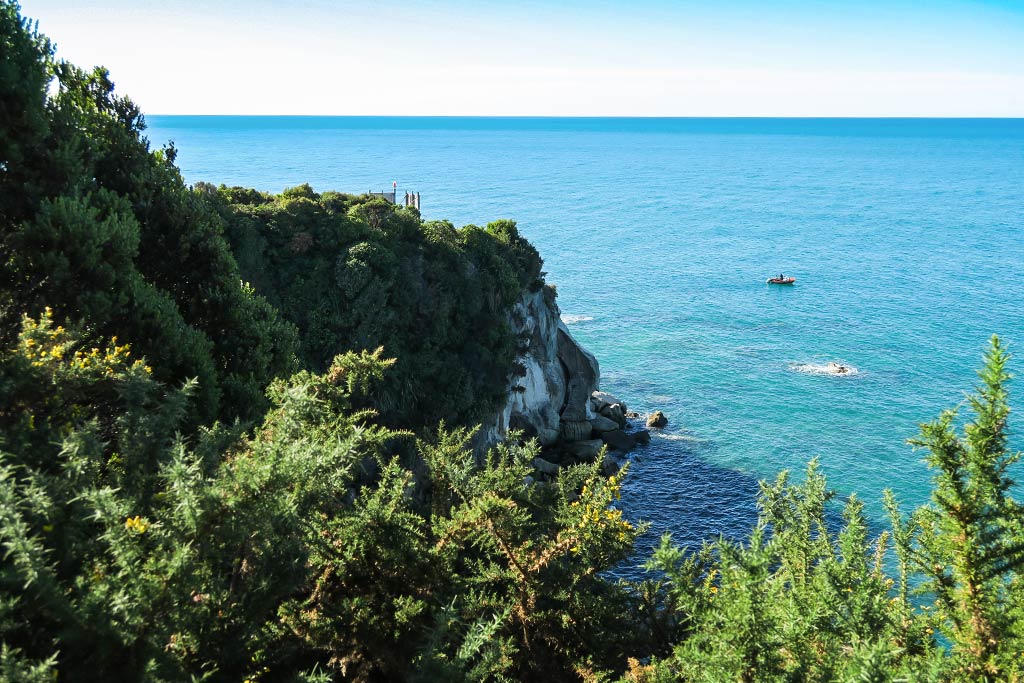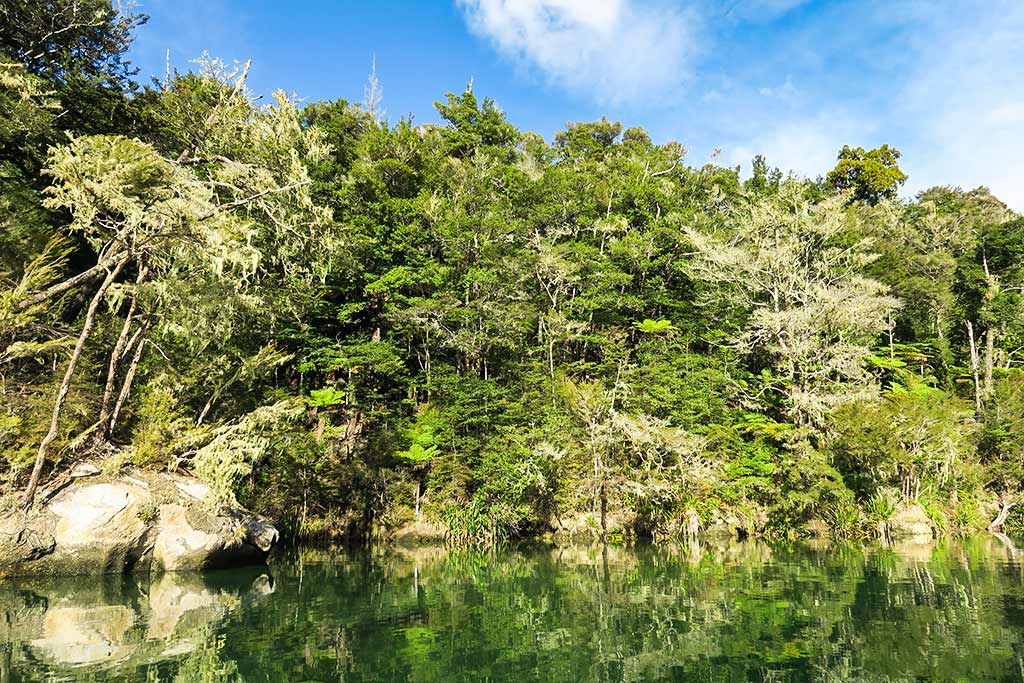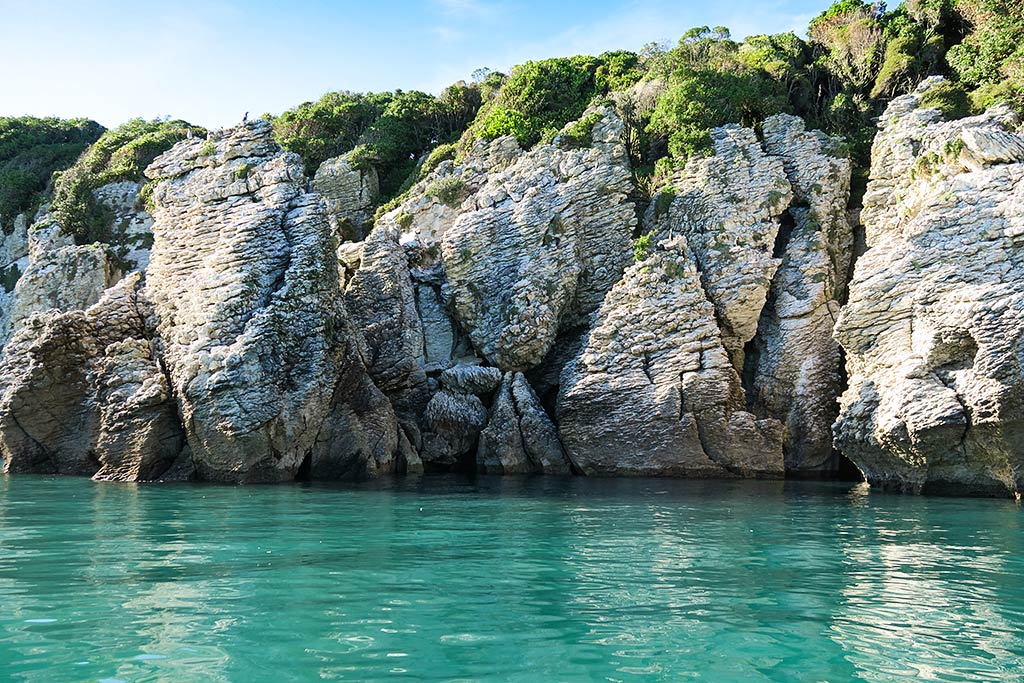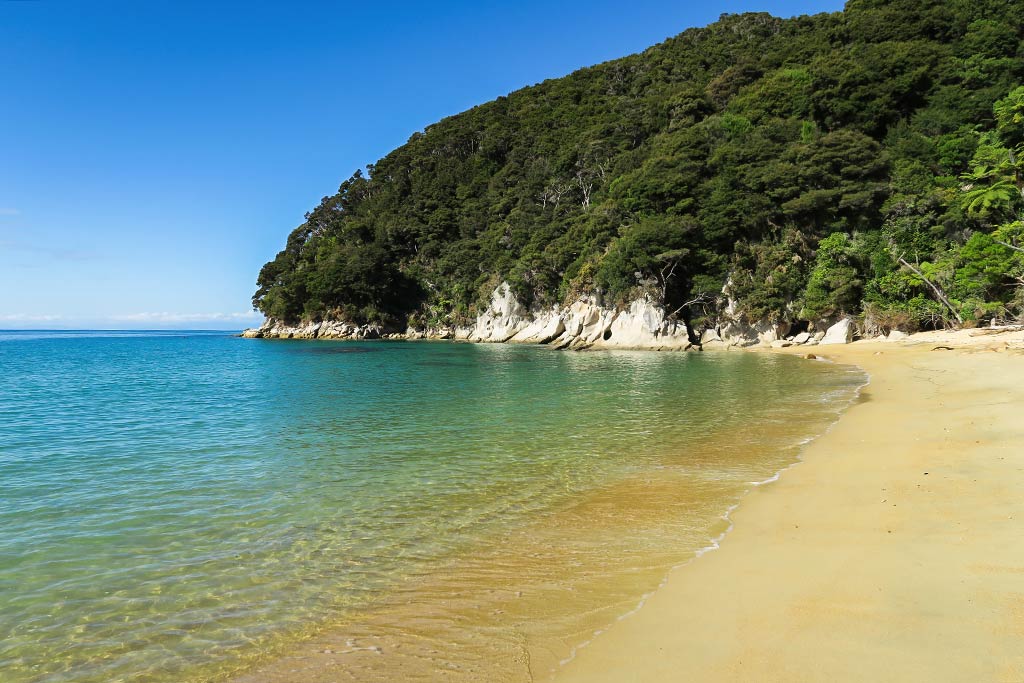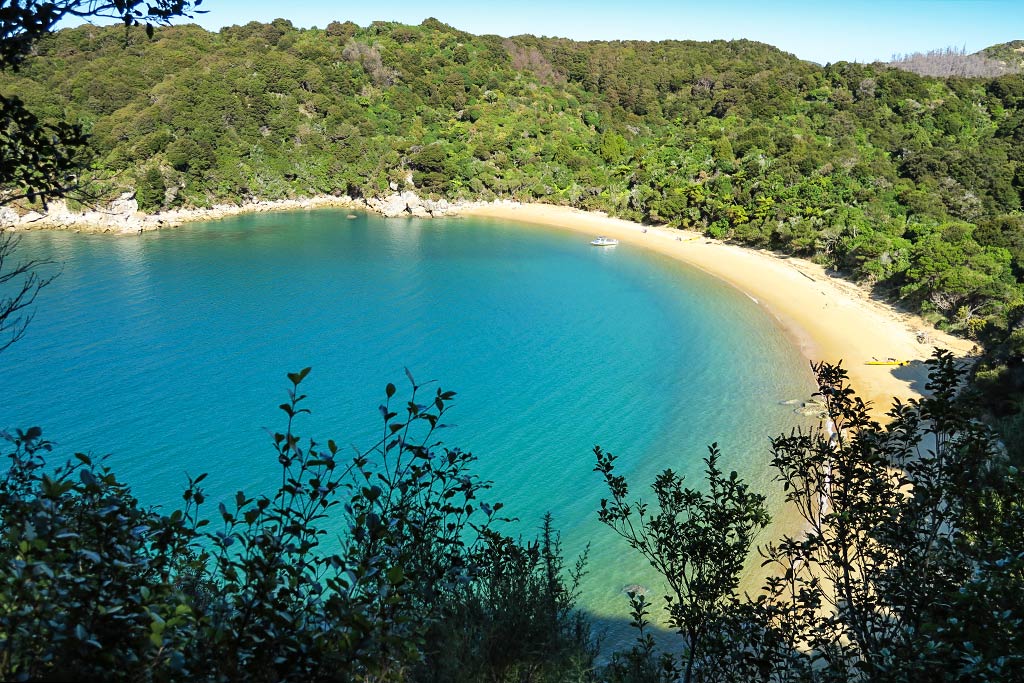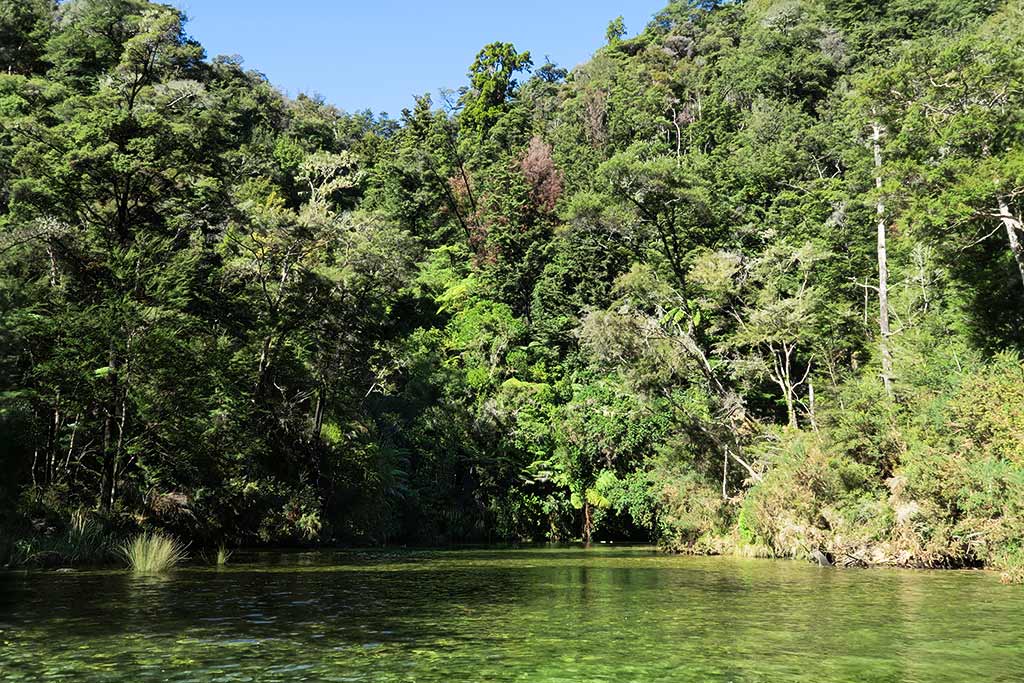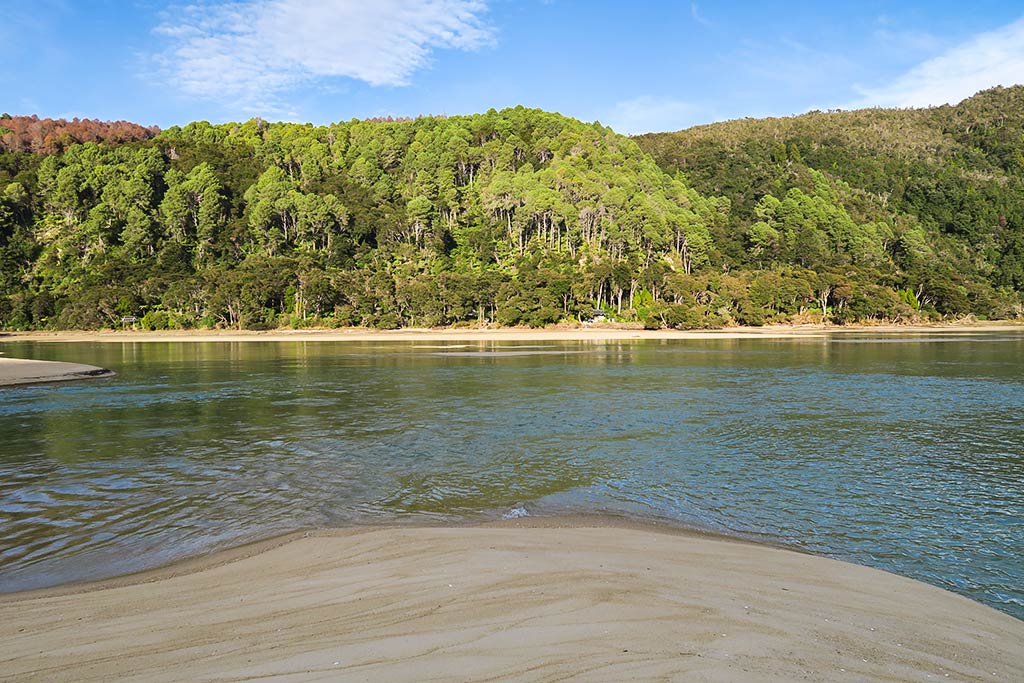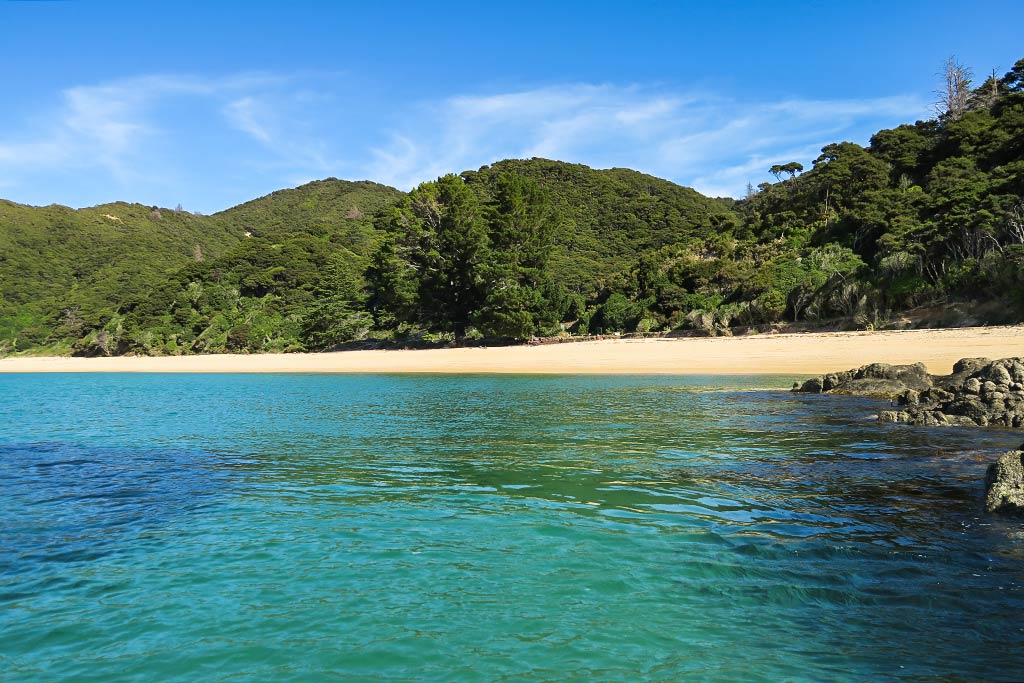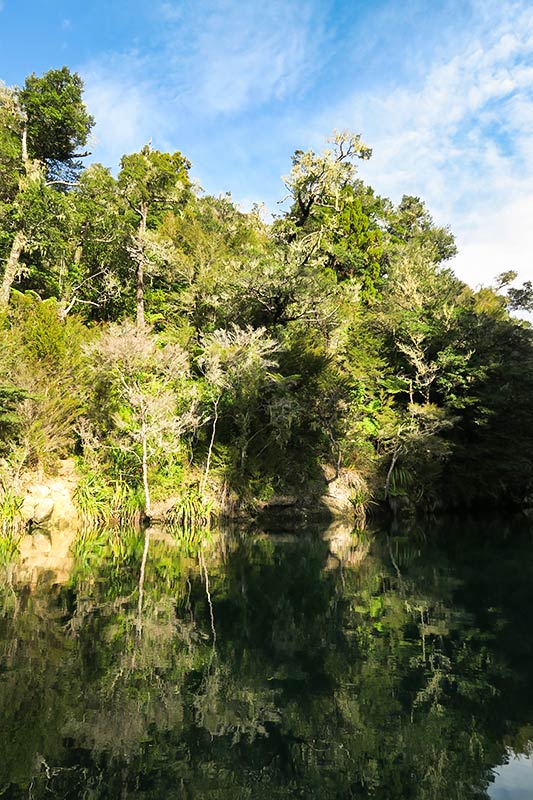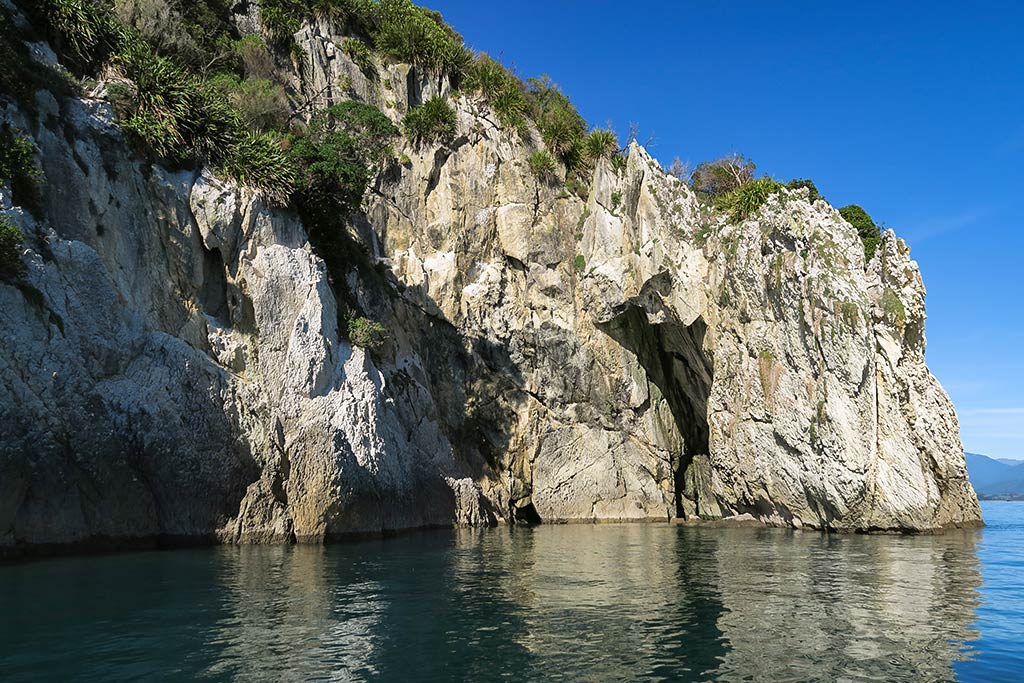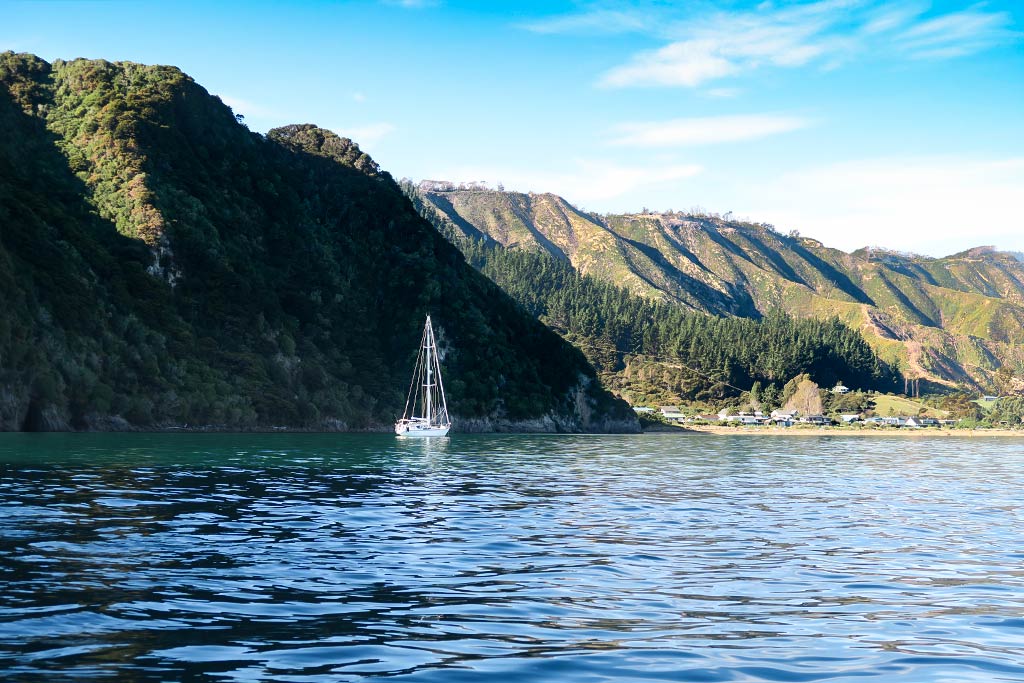This post answers a question I had when I first began reading about Abel Tasman National Park. The question: Is it possible to see Abel Tasman National Park, and see it well, by your own boat? The answer: Absolutely! But as always, there are some important considerations.
1. Timing is everything. Because of a lack of well-protected anchorages, it’s best to cruise the Abel Tasman area during a period of settled weather, and this is most likely to occur later in the summer. Also, it’s better to avoid Silly Season (the holiday period between December 25 and the first week or so of February) at all costs. There are just too many boats competing for too little space during this period.
2. The best way to get the most out of the park is to keep moving. This isn’t an area to pick a spot and settle in for a spell; it’s an area to go exploring as much as you can in the time that you have because windy periods happen regularly. For those windy periods you’ll probably want to be in Torrent Bay, the most protected anchorage in the region. It’s far from perfect, but it’s the best that’s available. This makes another compelling reason to cruise here during the more settled weather of late summer and early fall: the systems that do pass through are comparatively mild. Riding out a 20-knot northerly in Torrent Bay isn’t so bad. Riding out a 40-knot northerly would be bad.
3. The best time for exploring many places in the park is in the morning. The typical summer pattern is very mild mornings with winds gradually increasing from the southeast in the afternoon. While an area might be somewhat protected from this direction by a headland, the seas can roll in, necessitating a move to a more protected spot. Some anchorages are more exposed than others, and for those you may want to plan to anchor and explore in the morning; then be prepared move to a better spot in the afternoon if the wind picks up (beautiful Sandfly Bay/Falls River and Frenchman Bay are two examples of this sort of spot). Yup, it’s work to pick up and move frequently, but it’s worth the effort.
4. Combining Your Trip. If you’re cruising the south island, it’s great to do both the Marlborough Sounds and Abel Tasman National Park during the same season. We arrived in the sounds on March 12, Abel Tasman National Park on April 20, and finished our cruise, arriving in Nelson on April 25. We covered a lot of ground but somehow never felt rushed, and we saw everything we wanted to see (except D’Urville Island–we ran out of time for that one).
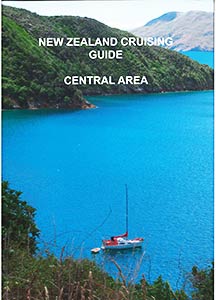
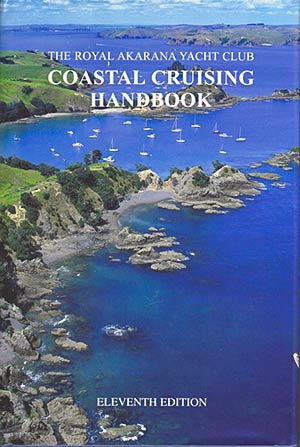
5. A guidebook is essential, and the New Zealand Cruising Guide Central Area by Keith W J Murray covers the sounds, Abel Tasman National Park, and the south end of North Island (including Wellington). It was $58 and worth every penny. We have our trusty and now-worn David Thatcher guides for the north island, but I should also mention that since we went down the east coast and needed to make stops south of Tauranga (about where the Thatcher guide ends), we needed to purchase yet another guidebook: The Royal Akarana Yacht Club Coastal Cruising Handbook. That one was $65, but it got us around the East Cape, to Napier (heading south) and Gisborne (as we headed north). It seemed expensive for covering a small area, but it was essential.
6. As for staying an entire season in the south island, be aware that there is a 3-month time limit for staying at the Nelson Marina, which could be an issue if you plan to leave your boat for an extended period. We would also advise not to counting on a weather window that will take you all the way from the tropics to the south island. We’ve tried twice and had to make other plans both times.
7. The classic way to get to the south island is to check in at Opua, go anchor near the top of the north island and wait for a weather window to take you down the west coast of North Island and on to South Island. We started in Opua but with no suitable weather window in sight, opted to go down the east coast of the north island, making stops along the way. We finally ended up in Wellington before crossing the Cook Strait to the south island. This worked really well for us, and in fact we ended up doing nearly the same thing again in reverse when we decided to head back to Opua (again because of weather). Anyone who tells you that you can’t do it this way is wrong.
So, now that all’s said and done, some may wonder if it was worth making the effort to get down to the South Island. I certainly wondered about it when other cruisers went down there, unable to get a sense of it from sporadic blog posts, vague “it was nice” sorts of answers, or most confusing: “I wish I’d stayed in the Hauraki Gulf because there’s no place to anchor in the sounds!”
For us, the answer is YES! The Marlborough Sounds and Abel Tasman National Park are beautiful and very special places, as is the city of Nelson. I think the main difference between a great experience and a difficult one might be in the willingness to time it properly and put in some work. Forcing your way south through adverse conditions or trying to cruise during Silly Season because it suits your schedule is self-defeating, as is trying to wing it by cruising without a guidebook because you don’t want to spend $58.
We did spend money on guidebooks, did research online to learn about hiking and sightseeing options, invested in Predict Wind which models land effects better than standard weather models, and checked the weather frequently (often twice daily). We knew when the big blows were coming and adjusted our schedule accordingly, opting to stay in marinas during the strongest winds.
Being willing to put in the time, effort and some expense made cruising this area work for us. (Frankly, I’m not sure it took any more of those things to cruise the south island than it does to cruise anywhere else.) We loved the time we spent here and would do it again. –Cyndi
Note: The photos in this post are ones that didn’t quite make the final cut for galleries in the original posts. You can click to enlarge and scroll through them.

